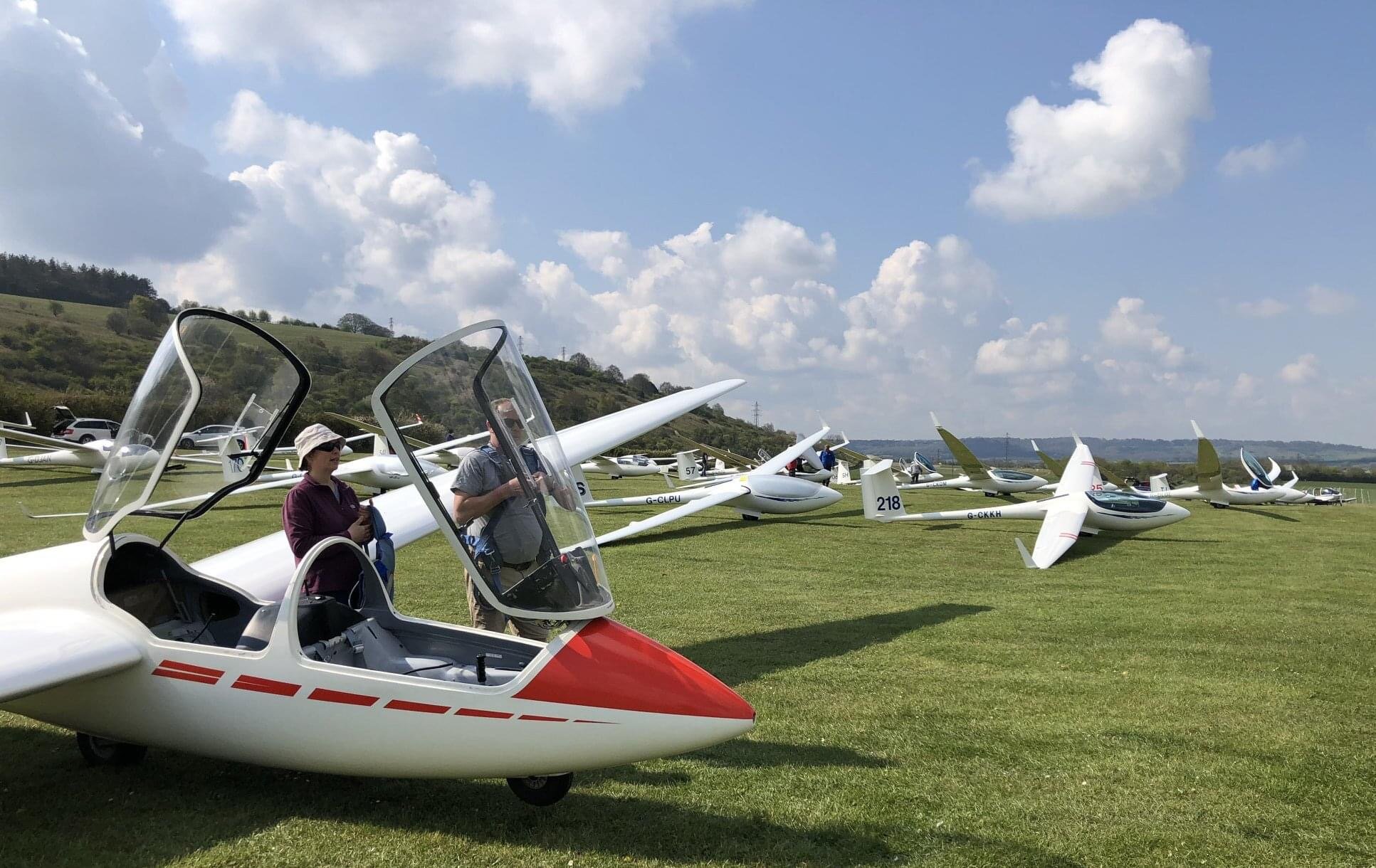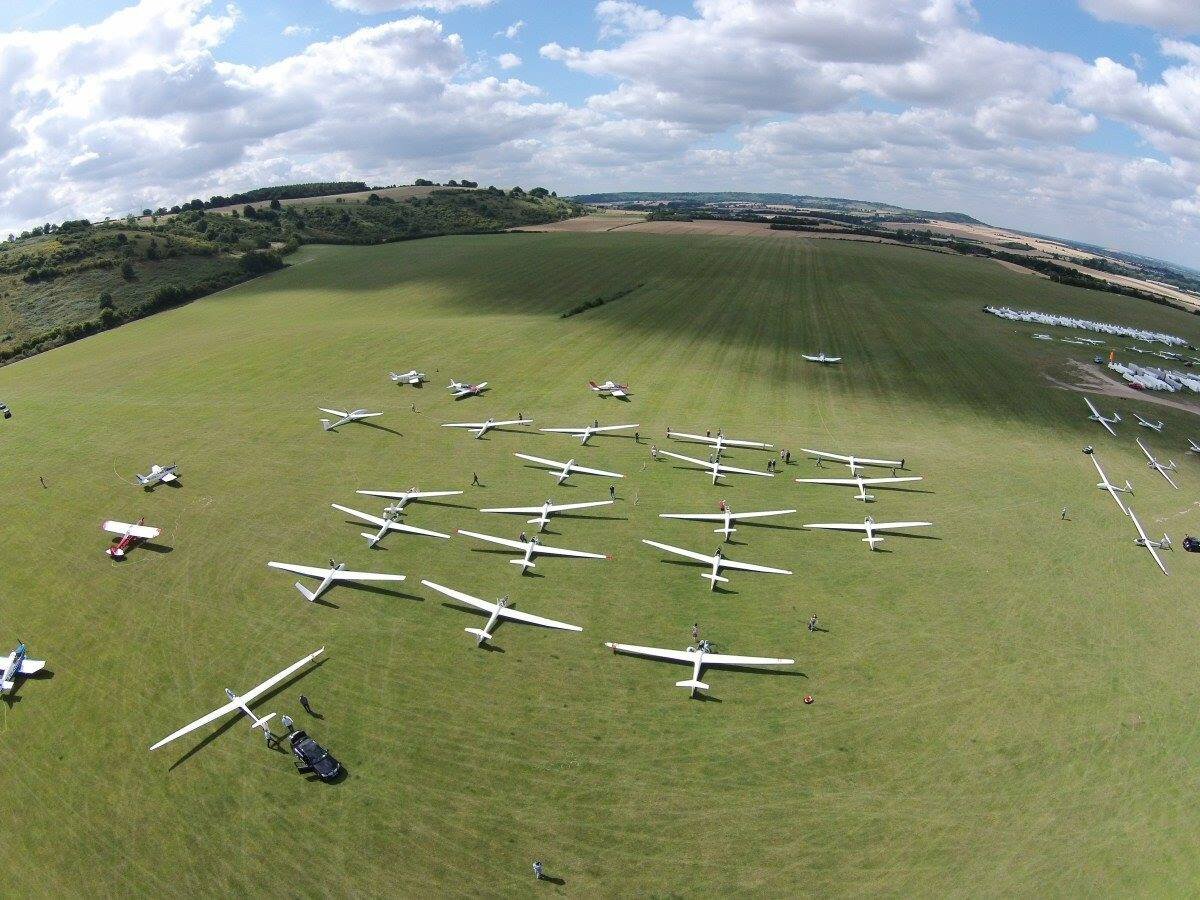Cross Country Flying
Cross country gliding is an integral part of the club with members conducting these flights throughout our entire active history.
The first ever gliding cross-country flight by a British glider was achieved from Dunstable in 1932 and it was the same Dunstable pilot who achieved Britain’s first ‘Silver C’.
In 1939, Geoffrey Stevenson achieved the first soaring flight across the English Channel, taking a winch launch from Dunstable, landing in Northern France.
Dunstable members currently hold 14 UK records, the more recent achievements include the UK Open Free Triangle Distance & UK Open Triangle Distance (837km - 2019),
750km Triangle Speed (106kph - 2018), UK 750km Out & Return Speed (94kph - 2019) and the UK Free Distance record (1094km - 2018).



On any ‘soarable’ day you will find LGC pilots preparing their gliders, assessing the weather and planning the task for the day. We have appropriate briefing facilities, along with wifi available across the whole airfield to enable pilots to use the most advanced meteorology and flight planning tools. What is probably least known about gliding is that in order to achieve faster speeds, which in turn may help with covering longer distances, gliders can and are regularly filled with water ballast to make them heavier. Despite being made to be as light as possible when empty, it is usually the heaviest glider that achieves the fastest speed.
A ‘grid’ of 30 gliders or more is not unusual and as soon as conditions are right the grid launch takes priority over other airfield activities so as to minimise the disruption on club flying. Therefore the “grid launch” temporarily makes the airfield one of the busiest in the country for aircraft movements and during a competition launch can rival that of the busiest commercial airports whilst launching is underway.
Normally a range of tasks are set, taking into account glider performance, but most importantly, pilot experience and ability. We have been as far afield as Cornwall, North Wales, North Yorkshire, the East Anglia coast. On the day when the weather is just right, a favourite task is to go to the Isle of Wight: whilst not the longest trip from the club, crossing to/from the island adds that next level of excitement and achievement to the flight.
The gliders tend to return at around the same time late in the afternoon, providing an exciting spectacle for the public enjoying the views from the top of the Downs or from the airfield itself. Usually the last ones back, having flown the longest/furthest have some great stories to share in the bar that evening.















